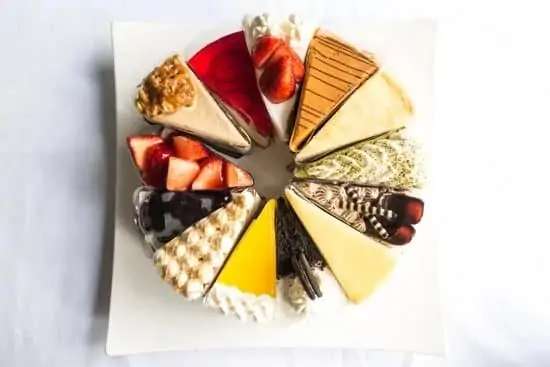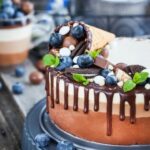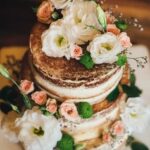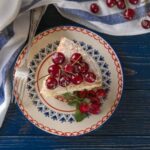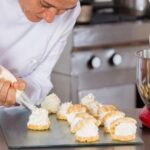Do you want to learn how to decorate cake with buttercream? Buttercream is a versatile and popular choice for decorating cakes, offering endless possibilities for creativity. Whether you’re a beginner or a seasoned baker, mastering the art of using buttercream for cake decorations can take your baking skills to the next level.
Buttercream is a key component in cake decorating, allowing bakers to create beautiful designs, textures, and flavors that can elevate any cake. Understanding the different types and consistencies of buttercream is essential for achieving the perfect look and taste for your cakes. In this article, we will explore the various techniques and tools needed to decorate cakes with buttercream, as well as provide tips and tricks for achieving professional-looking designs.
From basic piping and swirls to advanced techniques like ombre and textured designs, there are endless possibilities when it comes to decorating cakes with buttercream. With the right knowledge and skills, you can create stunning edible works of art that will impress your friends, family, or even clients. So let’s dive into the world of buttercream cake decorating and elevate your baking game.
Understanding Buttercream
Buttercream is a versatile and essential component in cake decorating, offering a smooth, creamy texture and the perfect base for creating intricate designs. Understanding the different types and consistencies of buttercream is crucial to achieving the desired look and feel for your decorated cake. There are several variations of buttercream, including American buttercream, Swiss meringue buttercream, Italian meringue buttercream, and French buttercream. Each type has its own unique qualities and uses.
American buttercream is the simplest to make, consisting of just butter, powdered sugar, and flavorings. It has a thick and sweet consistency with a slightly grainy texture but is perfect for piping decorations on cakes. On the other hand, Swiss meringue buttercream is made by heating egg whites and sugar over a double boiler before whipping it into a fluffy meringue with added butter. This type of buttercream has a silky smooth texture and less sweetness than American buttercream.
Italian meringue buttercream is made similarly to Swiss meringue but involves pouring hot sugar syrup into whipped egg whites instead of cooking them together. The result is an even lighter, smoother, and stable frosting that is great for intricate decorations. Lastly, French buttercream uses egg yolks instead of egg whites, resulting in a rich and indulgent flavor with a velvety texture that is perfect for filling layers of cakes.
When understanding the different consistencies of buttercream, it’s important to note that they can range from stiff to soft depending on their usage. Stiff consistency makes it easier to create intricate details or hold shapes when piped onto cakes, while soft consistency allows for smoother finishes or effortless spreading on layers. Each type of buttercream can be adjusted to achieve different consistencies by adding more liquid or powdered sugar as needed.
Essential Tools and Supplies for Decorating With Buttercream
When it comes to decorating cakes with buttercream, having the right tools and supplies is essential for achieving professional-looking results. Here are some must-have items for anyone looking to master the art of buttercream cake decorating:
- Piping Bags: These are indispensable for creating intricate designs and detailing on cakes. Look for reusable piping bags that are easy to clean and durable.
- Piping Tips: There are a wide variety of piping tips available, each producing different shapes and designs. Some popular tips include round tips for outlining and writing, star tips for rosettes and stars, and petal tips for creating floral designs.
- Offset Spatula: An offset spatula is perfect for spreading buttercream evenly across the surface of the cake. It also helps in creating smooth finishes on the sides of the cake.
- Turntable: A turntable makes it easier to decorate cakes by allowing you to rotate the cake as you work. This ensures even coverage and smooth finishes when applying buttercream.
- Bench Scraper: This tool is useful for achieving clean, straight edges on your buttercream-frosted cakes. It can also be used to create textured designs or patterns on the sides of the cake.
- Food Coloring: To add a pop of color to your buttercream decorations, invest in gel or paste food coloring. These types of coloring offer vibrant shades without altering the consistency of your buttercream.
By using these tools and supplies, you’ll be well-equipped to tackle any decorating project with confidence, creating beautiful designs with ease using buttercream.
Remember that mastering how to decorate cake with buttercream takes practice. Don’t be discouraged if your first attempts don’t turn out perfectly – keep practicing and experimenting with different techniques to find what works best for you. With time and patience, you’ll soon be creating stunning buttercream decorations that will impress friends, family, or clients alike.
Preparing the Cake
When it comes to decorating cakes with buttercream, proper cake preparation is essential to ensure a professional and polished final result. This section will cover the important steps of leveling, crumb coating, and stacking your cake before you begin applying buttercream decorations.
Leveling the Cake
Before you can start decorating your cake with buttercream, it’s crucial to ensure that the layers are level. Use a long serrated knife or a cake leveler to carefully trim any domed tops off your cake layers. This step not only creates a stable base for stacking but also makes it easier to achieve a smooth and even frosting application.
Crumb Coating
A crumb coat is a thin layer of frosting applied to the exterior of the cake in order to seal in any loose crumbs before adding the final layer of buttercream. To crumb coat your cake, spread a thin layer of slightly softened buttercream over the entire surface of the cake using an offset spatula.
Chill the cake for about 15-20 minutes after applying the crumb coat to allow it to set before moving on to the final frosting layer.
Stacking the Layers
Once your cake layers have been leveled and crumb coated, it’s time to stack them. Begin by placing one layer on a turntable or serving platter and spreading a generous amount of buttercream on top. Carefully place the next layer on top, making sure it is centered and level. Repeat this process if you have additional layers, ensuring that each one is stacked evenly and securely.
By following these important steps in preparing your cake for buttercream decoration, you’ll create a solid foundation for showcasing your creativity and skill in decorating cakes with buttercream.
Basic Buttercream Techniques
As you begin your journey into cake decorating with buttercream, it’s important to start with the basics. One of the fundamental techniques you’ll need to master is piping, swirls, and rosettes. These simple yet versatile designs can be used for any occasion, from birthdays to weddings, and can easily elevate the look of your cake.
To start, you’ll need a few key tools and supplies. A piping bag fitted with a coupler and a variety of tips – such as round, star, and petal tips – will allow you to create different designs. You’ll also need a turntable to easily rotate the cake as you decorate, ensuring smooth and even piping.
When it comes to actually decorating with buttercream, the consistency of your frosting is crucial. For piping and creating swirls and rosettes, a medium-consistency buttercream is ideal. It should hold its shape when piped but still be easy enough to work with.
Practice is essential when it comes to mastering these basic techniques. Start by practicing on a piece of parchment paper or on the sides of a cake pan before moving on to an actual cake. This will help you get a feel for how the buttercream flows out of the bag and how much pressure to apply.
One helpful tip for achieving professional-looking decorations is to make sure your hands are steady while piping. Additionally, maintaining consistent pressure as you pipe will result in even lines and shapes. With practice and patience, you’ll soon be creating beautifully decorated cakes using buttercream.
Advanced Decorating Techniques
When it comes to decorating cakes with buttercream, there are several advanced techniques that can take your creations to the next level. Ombre, ruffles, and textured designs are popular choices for those looking to add a unique and eye-catching touch to their cakes.
Ombre design involves blending different shades of buttercream to create a gradient effect on the cake. This can be achieved by starting with a darker shade at the bottom of the cake and gradually lightening the color as you move towards the top. Using an offset spatula or bench scraper, carefully blend the colors together for a seamless transition.
Ruffles are another stunning design element that can be created with buttercream. This technique involves piping frilly layers of buttercream onto the cake in a cascading pattern, resulting in a beautifully textured and feminine look. To achieve this effect, use a petal or rose tip and pipe overlapping layers around the sides of the cake.
Textured designs offer endless possibilities for creating visually interesting cakes with buttercream. From basketweave patterns to abstract geometric shapes, there are countless options for adding texture to your cakes. You can use specialty piping tips or even everyday kitchen tools like combs or fondant smoothers to create one-of-a-kind designs.
Mastering these advanced decorating techniques requires practice and patience, but the results are well worth the effort. Whether you’re looking to create a show-stopping wedding cake or simply want to elevate your baking skills, experimenting with ombre, ruffles, and textured designs will allow you to unleash your creativity and make beautiful cakes that are sure to impress.
| Technique | Description |
|---|---|
| Ombre | Blending different shades of buttercream for a gradient effect |
| Ruffles | Piping frilly layers of buttercream in a cascading pattern for a textured look |
| Textured Designs | Creating visually interesting cakes using specialty piping tips or everyday kitchen tools |
Tips and Tricks for Achieving Professional-Looking Decorations
Decorating a cake with buttercream can be a fun and creative process, but it also requires some skill and finesse to achieve professional-looking results. Here are some tips and tricks to help you elevate your buttercream cake decorating game:
Use the Right Consistency
One of the most important factors in achieving professional-looking buttercream decorations is using the right consistency of buttercream. If the buttercream is too stiff, it will be difficult to pipe smooth and clean lines; if it’s too soft, the decorations won’t hold their shape.
It’s essential to find the perfect balance for the specific design you’re aiming for. Practice adjusting the consistency by adding more powdered sugar for stiffness or a small amount of cream or milk for softness.
Practice Piping Techniques
Another key to achieving professional-looking decorations is mastering different piping techniques. Whether you’re creating borders, flowers, or intricate designs, practicing with different piping tips and techniques will help you improve your skills. Start by practicing basic piped shapes like stars, shells, and rosettes before moving on to more complex designs.
Pay Attention to Detail
Details make all the difference when it comes to decorating cakes with buttercream. Take your time to ensure that your lines are straight, your edges are sharp, and any intricate designs are executed with precision. Use tools like offset spatulas and bench scrapers to create smooth finishes on the cake’s surface before adding decorative elements.
By following these tips and tricks, you can enhance your skills in decorating cakes with buttercream and create professional-looking designs that will impress everyone who sees (and tastes) your creations. With patience and practice, you’ll soon be able to decorate cakes with buttercream like a pro.
Troubleshooting Common Buttercream Decorating Issues
Even the most experienced cake decorators encounter issues when working with buttercream. It’s important to understand how to troubleshoot these common problems in order to achieve professional-looking results. One common issue that many decorators face is air bubbles forming in the buttercream during mixing or piping.
To prevent this, make sure to properly cream the butter and sugar, and avoid overmixing once the buttercream has reached the desired consistency. If air bubbles do appear, gently tap the filled pastry bag on your work surface before piping to release any trapped air.
Another issue that can arise is achieving smooth and even buttercream coverage on the cake. This can be especially challenging when using a crusting buttercream, as it sets quickly once applied. To overcome this, try using a hot spatula to smooth out any imperfections on the cake’s surface. Simply run a clean spatula under hot water, dry it off, then use it to gently smooth the buttercream.
Additionally, color consistency can be a problem when decorating with buttercream. Oftentimes, when adding food coloring to achieve vibrant hues, decorators find that their buttercream becomes thin or greasy. To combat this issue, use gel or powder food coloring instead of liquid ones, as they won’t affect the consistency of the buttercream. Start with a small amount of coloring and gradually add more until you achieve your desired shade without compromising the texture of your buttercream.
By understanding these common issues and how to troubleshoot them, decorators can overcome challenges and create beautifully decorated cakes with buttercream. With practice and patience, mastering these troubleshooting techniques will help achieve professional-looking results every time.
Conclusion
In conclusion, mastering the art of decorating cakes with buttercream opens up a world of creativity and endless possibilities. Whether you’re a novice baker or an experienced cake decorator, understanding the different types and consistencies of buttercream is key to achieving professional-looking decorations. By investing in essential tools and supplies, and learning basic techniques such as piping, swirls, and rosettes, you can elevate your cake decorating skills to the next level.
Furthermore, don’t be afraid to experiment with advanced decorating techniques such as ombre, ruffles, and textured designs. With practice and patience, you can create stunning cakes that are not only visually appealing but also delicious. Remember that troubleshooting common buttercream decorating issues is part of the learning process, so don’t get discouraged if things don’t turn out perfectly the first time.
Overall, learning how to decorate cake with buttercream is both an art and a science. With dedication and a willingness to learn from mistakes, you can become proficient at creating beautifully decorated cakes that will impress your friends, family, or even potential clients. So go ahead and unleash your creativity with buttercream – who knows what amazing designs you’ll come up with.
Frequently Asked Questions
How Do You Cover a Cake With Buttercream for Beginners?
Covering a cake with buttercream for beginners can be done by first applying a crumb coat to seal in the crumbs. Then, use an offset spatula to add a thick layer of buttercream and smooth it out.
Can You Decorate a Cake With Buttercream Frosting?
Yes, you can definitely decorate a cake with buttercream frosting. Buttercream is versatile and can be used to create different designs, from simple swirls and rosettes to intricate patterns and textures.
How Do You Ice a Cake With Buttercream for Beginners?
When icing a cake with buttercream for beginners, start by placing the cake on a turntable for easier handling. Apply a generous amount of buttercream on top of the cake, then use the spatula to spread it evenly over the top and sides. Smooth out any rough spots for a professional finish.

Welcome to our cake decorating blog! My name is Destiny Flores, and I am the proud owner of a cake decorating business named Cake Karma. Our mission is to provide delicious, beautiful cakes for all occasions. We specialize in creating custom cakes that are tailored specifically to each customer’s individual needs and tastes.

